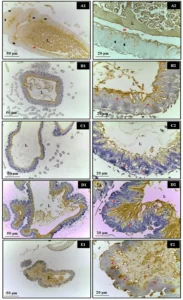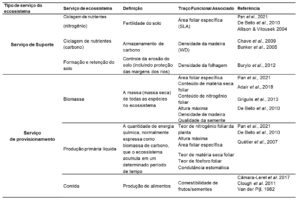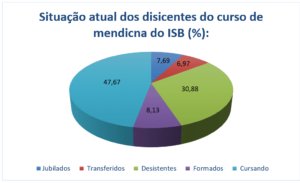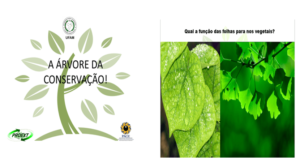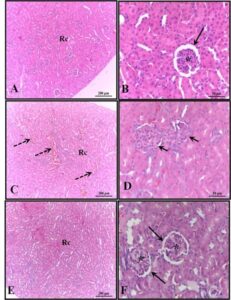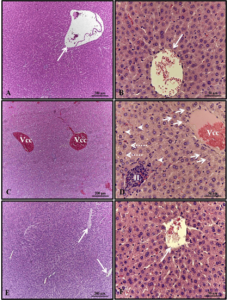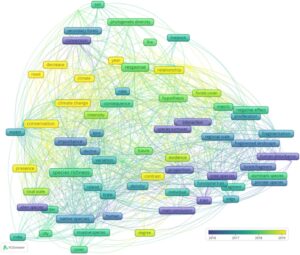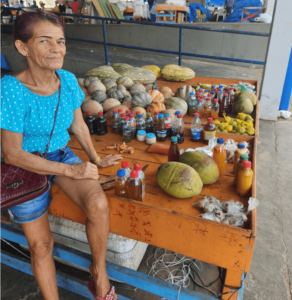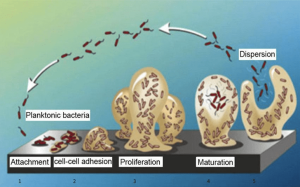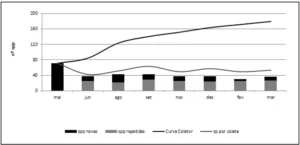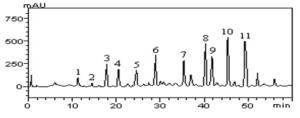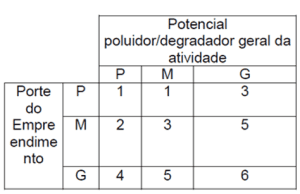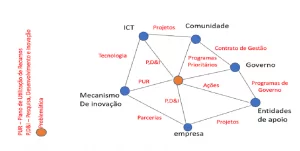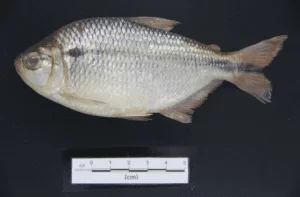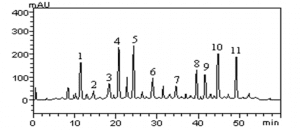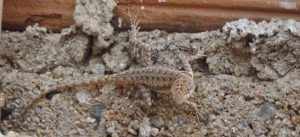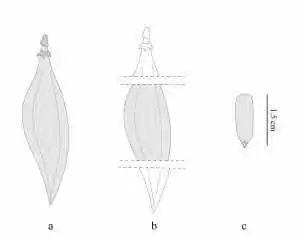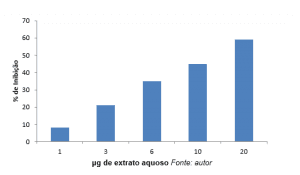MATOS, Alex Costa [1], ARAÚJO, Franciolli da Silva Dantas [2], FECURY, Amanda Alves [3] OLIVEIRA, Euzébio [4], DENDASCK, Carla Viana [5], DIAS, Claudio Alberto Gellis de Mattos [6]
MATOS, Alex Costa. Et al. National zinc overview between 2010 and 2014. Revista Científica Multidisciplinar Núcleo do Conhecimento. Year 03, Ed. 09, Vol. 08, pp. 05-11 September 2018. ISSN:2448-0959, Acess Link: https://www.nucleodoconhecimento.com.br/biology/zinc, DOI: 10.32749/nucleodoconhecimento.com.br/biology/zinc
SUMMARY
Zinc is a chemical element represented symbol Zn, atomic number 30, with atomic mass 65.4, found in nature with the largest reserves being found in Australia and China with Brazil having an almost negligible reserve. Zinc can also be found in the form of sulfides and oxides, associated with lead, copper, silver and iron. Brazilian zinc production from 2010 to 2014 was 895 (10³t). This article aims to present the world zinc reserve between 2010 and 2014, in addition to brazilian production, import, export and domestic consumption and its price in the market between 2010 and 2014. The research was carried out by accessing the website of the National Department of Mineral Production – DNPM (http://www.dnpm.gov.br/). In the world zinc reserves, Australia had the highest average, followed by China, Peru and Mexico, brazil had the lowest average among the countries. In Brazilian zinc production, we observed a steady decrease growing again in 2014. On the other year, imports remained unstable and in exports there was a large decrease. The consumption of concentrate in Brazil decreases and due to the economic crisis the consumption of the primary metal remained unstable. The price of zinc between 2010 and 2014 remained unstable due to factors such as world production and the world financial market.
Keywords: Zinc, National Panorama, DNPM.
INTRODUCTION
Zinc is a chemical element represented symbol Zn, atomic number 30, with atomic mass 65.4, found in nature. It is a metal that in its pure form has bluish gray coloration of hardness 2,5, with great resistance to chemical decomposition (OLIVEIRA et al., 2016). Zinc is widely used in the coating of steel or iron with a layer to avoid the effects of oxidation, in addition to the metallic coating of objects such as wires, representing about 57% of the world’s consumption of zinc. Zinc is also used in the manufacture of casting alloys that are used in castings, appliances, the war material industry and automobiles (BRASIL, 2010). The mineral zinc studied in this article can be found in nature in the form of sulfides and oxides, associated with lead, copper, silver and iron, occurring mainly in calcarias rocks (MEDEIROS, 2012).
The main zinc ores are: ZnFeS composition sfalerite with 67.00% zinc, Zn2SiO4 and 54.20% zinc composition hemimorfita, ZnCO3 composition smithsonite and zinc 52.00%, Hydrozincite composition 2ZnO3.3Zn(OH)2 and 56.00% zinc, Calamina composition 2ZnO.SiO2.H2O and 54.00% zinc, Zincite of ZnO composition and 80.30% zinc, Willemite of composition Zn2SiO4 and 58.50% zinc and Franklinite of zn,MnFe2O4 composition of 15.00 to 20.00% zinc (OLIVEIRA et al., 2016).
Mining is the process of extracting minerals that naturally focus on the earth’s crust in order to use or sell it (GANEM et al., 2016). In 2014, Brazil raised about R$ 40 billion from mining activity in the country, which represented 5% of the country’s industrial GDP (BRASIL, 2015b).
Mineral is all natural chemical compound that have economic value, formed from physical and chemical processes in the earth’s crust that has specific properties of color, hardness, brightness, refraction index, transparency, cleavage and specific mass (DNPM, 2017).
Mineral reserve is a mineral occurrence in the earth’s crust with studies already carried out that identified minerals with economic value (CURI, 2014).
Apparent consumption is the total sum of the production of a given mineral counting imports and subtracting exports, that is, it is an estimated data on the amount of a mineral consumed by a country. In 2014, the apparent intake of zinc concentrate was 256.593(10³t) and 241.861 (10³t) of primary zinc metal (BRASIL, 2016).
Export is the sale and shipping of products produced in national territory to other countries. Import is the purchase of products produced outside the national territory, that is, in another country (BRASIL, 2015; 2015a). The Free On Board (FOB) says that the exporter is responsible for the ore only until it is inside the ship, at the point indicated by the buyer, to be transported (IPEA, 2010).
GOAL
Present the world zinc reserve between 2010 and 2014, in addition to brazilian production, import, export and domestic consumption and its price in the market between 2010 and 2014.
METHOD
The research was carried out by accessing the website of the National Department of Mineral Production – DNPM (http://www.dnpm.gov.br/), where the steps were followed: on the homepage, it was in “collection” and clicked on “publications”; on the following page, “statistical series and mineral economy” were selected; later, it was clicked on “mineral summary”; and on the following page, the “Brazilian Mineral Summary” was downloaded from 2011 to 2015 from which the data were collected. The data was compiled within the Excel application, a component of the Microsoft Corporation Office suite. The bibliographic research was carried out in scientific articles, using computers from the computer laboratory of the Federal Institute of Education, Science and Technology of Amapá, Macapá Campus, located at: Rodovia BR 210 KM 3, s/n – Bairro Brasil Novo. ZIP Code: 68.909-398, Macapá, Amapá, Brazil.
RESULTS
Figure 1 shows the average of the world’s zinc reserves (106t) between 2010 and 2014. Australia had the highest average, followed by China, Peru and Mexico. Brazil had the lowest average among the countries, followed by Canada, Kazakhstan, India and E.U.A.

Figure 1: Shows the average of global zinc reserves between 2010 and 2014 (106t).
Figure 2 shows the Brazilian zinc production (10³t) between 2010 and 2014. During the years 2010 to 2013, we observed a steady decrease in Brazilian production growing again in 2014.
Figure 2: Shows the Brazilian zinc production (10³t) between 2010 and 2014.
Figure 3 shows the Brazilian import and export of zinc (10³t) between 2010 and 2014. From 2010 to 2014, zinc concentrate imports remained unstable, increasing from 2010 to 2011, decreasing from 2011 to 2012, growing again in 2013 and decreasing again in 2014. In exports from 2010 to 2011, there was an increase and from 2011 to 2014, there was a large decrease.
Figure 3: Shows the Brazilian import and export of zinc (10³t) between 2010 and 2014.
Figure 4 shows the apparent consumption of concentrate and primary zinc metal per ton between 2010 and 2014. In the period from 2010 to 2014 we observed a steady decrease in the apparent consumption of zinc concentrate and a variation in the consumption of primary zinc metal, with a small decrease from 2010 to 2012, with an increase in 2013 and a decline in 2014.
Figure 4: Shows the apparent consumption of concentrate and primary zinc metal per ton between 2010 and 2014.
Figure 5 shows the price of zinc concentrate between 2010 and 2014 (US$-FOB/t). From 2010 to 2011, there was an increase in the price of zinc concentrate. From 2011 to 2013, there was a decrease in the price of concentrate and in 2014, we returned to have a growth in the price of concentrate Figure 5: Shows the price of zinc concentrate between 2010 and 2014 (US$-FOB/t).
Figure 5: Shows the price of zinc concentrate between 2010 and 2014 (US$-FOB/t).
DISCUSSION
The fact that Australia has the largest zinc reserve between 2010 and 2014 can be explained by the geology of the country that favors the emergence of zinc reserves that combined with the high investments made by the Australian government in the mineral sector has enabled more studies and consequently the entry of mineral reserves into the registers (AUSTRALIAN, 2017).
With the slowdown and instability of the Brazilian economy from 2010 to 2014, there was a decrease in Brazilian trade relations that ended up affecting mining companies that exploit zinc and thus made its production impossible, which explains the decrease in zinc production in the period 2010 to 2013 (CERVO and LESSA, 2014; PAULA and PIRES, 2017)
During the period from 2010 to 2014, Brazil experienced a time of instability and decline in its economy, which eventually affected Brazilian trade relations. The decrease in Brazil’s trade relations with its main zinc suppliers and buyers explains the instability in zinc imports from 2010 to 2014, and also the decrease in zinc exports in the period 2011 to 2014 (CERVO and LESSA, 2014).
The consumption of zinc concentrate is more related to metallurgical companies, while the primary metal is related to the galvanizing process, metal alloys, automotive industry and civil construction. The degrowth in zinc concentrate consumption is explained by the closure of metallurgical companies in Brazil between this period. The instability in the consumption of primary metal is explained by the instability of the Brazilian economy that directly influences the areas that consume zinc the most, which are automobile sands and civil construction (BRASIL, 2001; PAULA and PIRES, 2017)
The factors that influence the price of zinc in the market are several such as quantity of consumption, inventories, the financial market situation and the world production of zinc. The instability in the price of zinc in the period studied from 2010 to 2014 can be explained by a greater or lesser amount of zinc in the world market, as well as the high or low of the financial market, in addition to factors such as stock and consumption (BRASIL, 2001; PAULA and PIRES, 2017).
CONCLUSION
Brazilian zinc production from 2010 to 2014 declined due to brazil’s economic instability that eventually affected its commercial relations with its zinc buyers and sellers, reducing its exports and causing great instability in imports. Zinc consumption within Brazil is divided into two forms in concentrate and primary metal in which the concentrate is mainly related to metallurgical companies and the primary metal with galvanizing processes, the automotive industries and civil construction, due to the closure of some metallurgical companies in the period of 2010 the consumption of concentrate in Brazil decreases and due to the economic crisis the consumption of primary metal remained unstable. The price of zinc between 2010 and 2014 remained unstable due to factors such as world production and the world financial market.
REFERENCES
AUSTRALIAN. Prata de chumbo. 2017. Disponível em: < http://www.ga.gov.au/data-pubs/data-and-publicationssearch/publications/aimr/zinc-lead-silver >. Acesso em: 21 de dezembro, 2017.
BRASIL. Balanço Mineral Brasileiro 2001. Brasília: Departamento Nacional de Produção Mineral – DNPM 2001.
______. Relatório Técnico 25 Perfil do Minério de Zinco: MINISTÉRIO DE MINAS E ENERGIA – MME. v.3 2010.
______. Exportação. 2015. Disponível em: < http://idg.receita.fazenda.gov.br/orientacao/aduaneira/importacao-e-exportacao/despacho-aduaneiro-de-exportacao >. Acesso em: 13 de novembro 2017.
______. Importação. 2015a. Disponível em: < http://idg.receita.fazenda.gov.br/orientacao/aduaneira/importacao-e-exportacao/despacho-aduaneiro-de-importacao >. Acesso em: 13 de novembro, 2017.
______. Informações sobre a economia mineral brasileira: Instituto Brasileiro de Mineração.: 01 – 25 p. 2015b.
______. Sumário Mineral. Brasília: Departamento Nacional de Produção Mineral – DNPM 2016.
CERVO, A. L.; LESSA, A. C. O declínio: inserção internacional do Brasil (2011–2014). Rev. Bras. Polít. Int., v. 57, n. 2, p. 133-151, 2014.
CURI, A. Minas a céu aberto: planejamento de lavra. São Paulo: Oficina de Textos, 2014.
DNPM. Dicionário de Mineralogia. 2017. Disponível em: < http://www.dnpm-pe.gov.br/Detalhes/Mineral.htm >. Acesso em: 27 de novembro 2017.
GANEM, R. S.; FILHO, A. F. F.; GANEM, R. S. IMPACTOS SOCIOAMBIENTAIS DA MINERAÇÃO: Estudo de Caso em Pedreira, Ilhéus, BA. IV Congresso Baiano de Engenharia Sanitária e Ambiental – COBESA. Cruz das Almas, Bahia 2016.
IPEA. O que é FOB? , 2010. Disponível em: < http://desafios.ipea.gov.br/index.php?option=com_content&view=article&id=2115:catid=28&Itemid=23 >. Acesso em: 13 de novembro 2017.
MEDEIROS, M. A. Zinco. Química nova na escola, v. 34, n. 3, p. 159-160, 2012.
OLIVEIRA, O. M.; BRASIL, M. D.; ANJOS, B. O. ESTUDO DAS PROPRIEDADES DO ZINCO E SUAS APLICAÇÕES NA CONSTRUÇÃO CIVIL. 22º CBECiMat – Congresso Brasileiro de Engenharia e Ciência dos Materiais. Natal – RN 2016.
PAULA, L. F.; PIRES, M. Crise e perspectivas para a economia brasileira. Estudos Avançados, v. 31, n. 89, 2017.
[1] High school student. Technical Course in Mining. Federal Institute of Basic, Technical and Technological Education of Amapá (IFAP).
[2] Materials Technologist. Master in Materials Science and Engineering. Researcher Professor, Federal Institute of Basic, Technical and Technological Education of Amapá (IFAP)
[3]Biomedical. PhD in Tropical Diseases. Researcher Professor, Federal University of Amapá (UNIFAP).Biologist. Doctor of Tropical Diseases. Researcher Professor at the Federal University of Pará (UFPA).
[4] Biologist. Doctor of Tropical Diseases. Researcher Professor at the Federal University of Pará (UFPA).
[5] Theologian. PhD in Clinical Psychoanalysis. Researcher at the Center for Research and Advanced Studies, São Paulo, SP.
[6] Biologist. PhD in Theory and Behavior Research. Researcher Professor, Federal Institute of Basic, Technical and Technological Education of Amapá (IFAP)




